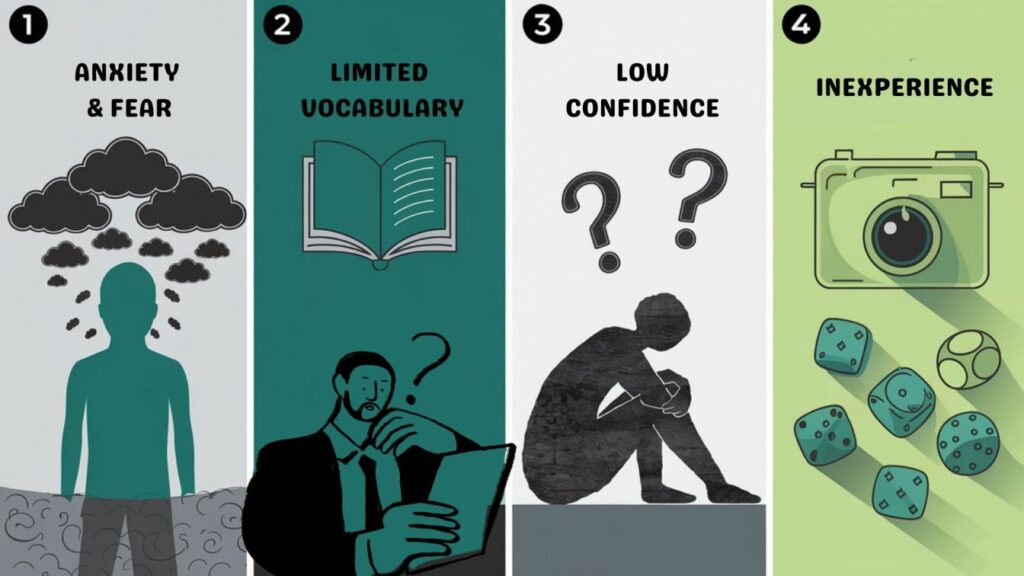Looking for powerful ways to improve communication skills? You’re one question away from transforming every chat into a memorable moment. Imagine walking into any room—whether it’s a job interview, a first date, or your weekly team meeting—and instantly sparking genuine connections without awkward small talk.
In this guide, you’ll uncover four research-backed ways to improve communication skills so you can:
- Shift your mindset from “performing” to “connecting”
- Expand your vocabulary so words flow effortlessly
- Elevate your presence through body language and style
- Practice smart with daily drills that build real confidence
No gimmicks. No hollow scripts. Just simple, proven tactics to help you speak like a pro—starting now. Ready to make “dry” conversations a thing of the past? Let’s dive in.
Why Your Conversations Feel Dry: A Quick Comparison
Before we jump into solutions, let’s compare two common scenarios:
| Scenario | Before: “Dry” Conversation | After: “Pro” Conversation |
|---|---|---|
| Mindset | Pressure to perform; fear of awkward silence. | Genuine curiosity; focus on connection. |
| Vocabulary | Limited to everyday words (“good,” “nice”). | Sprinkled with engaging, precise terms. |
| Body Language | Slouched posture, minimal eye contact. | Open stance, confident gestures, smiles. |
| Practice Habit | Rarely speak in low-stakes situations. | Daily “camera drills” and casual chats. |
As this table shows, small shifts in mindset, word choice, and practice can turn a lackluster chat into a dynamic exchange.
Four Pillars of Pro-Level Communication Skills
Pillar 1: Intention, Mindset & Staying Calm Under Pressure
“Your intention creates your experience.”
- Connect, Don’t Impress. When you approach a conversation with the goal of genuine connection—rather than performance—you ease the pressure. Next time you’re wondering why are my convos dry, remind yourself: “I’m here to learn about you,” not to dazzle.
- Ask Open-Ended Questions. Swap “Did you like the movie?” for “What about the movie surprised you?” This invites stories, emotions, and follow-up questions.
- Stay Calm Under Pressure. Nervous energy can block your words. For proven techniques on managing stress and speaking smoothly even when stakes are high, check out our guide on how to stay calm under pressure.
Pro Tip: Before you speak, take a silent breath and set a micro-intention: “I’m curious about her story,” or “I want to share one helpful idea.” These tiny mental anchors keep you grounded and steady.
Pillar 2: Build a Robust Vocabulary to Improve Communication Skills
“Words are, of course, the most powerful drug used by mankind.” — Rudyard Kipling
- Read Daily. Allocate 30–60 minutes to books that both intrigue you and challenge your word bank. Whether it’s Malcolm Gladwell or a compelling novel, highlight 1–2 new words each session.
- Use “Books to Improve Vocabulary.” Resources like Word Power Made Easy or Vocabulary.com can turn raw reading into deliberate practice.
Research Check: A 2019 study in Applied Cognitive Psychology found that regular reading significantly boosts verbal fluency and conversational confidence.
Figure: A curated shelf of must-read books to expand your word arsenal.
Pillar 3: Appearance & Nonverbal Cues
“People may hear your words, but they feel your attitude.”
- Dress for Confidence. You don’t need designer labels—just well-fitting clothes that align with your style. When your outfit feels “right,” your posture straightens, and your smile shines more naturally.
- Grooming & Health. Regular haircuts, good skincare, balanced nutrition, and quality sleep all bolster self-esteem. Feeling your best on the outside frees mental energy for authentic expression.
- Master Body Language. Maintain open gestures, nod in agreement, and mirror subtly to build rapport. These cues signal warmth and engagement.
Pillar 4: Practice & Feedback to Improve Communication Skills
“Practice isn’t the thing you do once you’re good. It’s the thing you do that makes you good.” — Malcolm Gladwell
- Speak on Camera. Whether private or public, recording yourself helps identify filler words (“um,” “like”), pacing issues, and eye-contact habits. Aim for 5–10 minutes a day.
- Role-Play Real Scenarios. Want to know how to talk to girls or nail a work presentation? Simulate with a friend or coach.
- Solicit Honest Feedback. After a talk or chat, ask: “What felt clear?” and “What could be stronger?” Constructive notes illuminate blind spots.
The Communication Pipeline

| Blockage Type | Root Cause | Clearing Strategy |
|---|---|---|
| Anxiety & Fear | Negative self-talk | Mindset shift, mindfulness exercises & staying calm under pressure |
| Limited Vocabulary | Lack of reading / word exposure | Daily reading + targeted vocab apps |
| Low Confidence | Appearance & self-esteem issues | Grooming, healthy habits, power poses |
| Inexperience | Few speaking opportunities | Camera practice + role-playing |
From Theory to Action: A 7-Day Challenge
| Day | Focus | Activity |
|---|---|---|
| 1 | Intention Mapping | List three conversation goals (e.g., “Learn one thing new,” “Share a personal story”). |
| 2 | Reading Habit | Read 30 minutes; highlight two new words and use them in three sentences. |
| 3 | Style Check | Audit your wardrobe; pick one outfit that feels confident. Commit to wearing it. |
| 4 | Camera Drill | Record a 5-minute talk on any topic. Review for posture, eye contact, and fillers. |
| 5 | Real-World Practice | Strike up a conversation with a cashier or neighbor using open-ended questions. |
| 6 | Feedback Loop | Share your camera video with a friend/mentor; request three specific improvement tips. |
| 7 | Reflection & Reset | Journal what changed: Did your convos feel less dry? Which pillar felt strongest? Plan next week’s focus. |
Conclusion
Improving how to improve communication and how to improve social skills isn’t a one-and-done task—it’s a journey through mindset, vocabulary, appearance, and relentless practice. By treating each conversation as a chance to connect, investing in daily reading, presenting yourself confidently, and rehearsing both on and off camera, you’ll steadily clear away the “gunk” that makes why are my convos dry a thing of the past.
Call to Action
Ready to speak like a pro? ✅ Share your biggest communication challenge in the comments below.
👉 Dive deeper: check out Advanced Conversation Techniques.
👍 If you found this post helpful, subscribe for weekly insights on leveling up your social skills!



